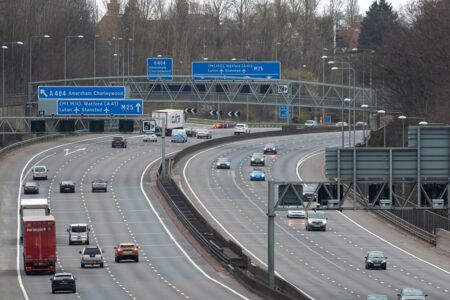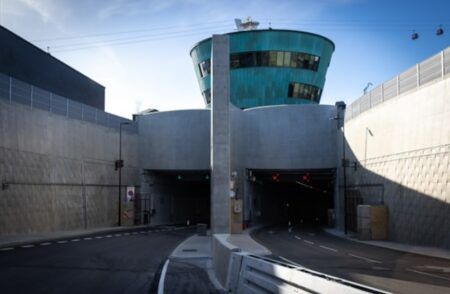America’s worst public health crisis in a century flattened roadway congestion to levels not seen in 40 years, but the respite was short-lived, according to the 2021 Urban Mobility Report (UMR) from the Texas A&M Transportation Institute (TTI).
In the pandemic shutdown of spring 2020, daily commuter traffic dropped by almost half compared to the year before. Any traffic snarls that did exist were spread over more hours of the day, as rush-hour travelers took on roles as midday shoppers and child transporters. Also, more of each week’s travel delay in 2020 was shifted to the weekend, another result of reduced weekday rush-hour commuting.
As noted by this year’s UMR, Americans experienced four distinct traffic years in one during 2020:
- January and February, when things looked a lot like the year before.
- March through May, when the shutdown produced roadway scenes not seen since George H.W. Bush was president and postage stamps cost a quarter.
- June through August, when the rush hours began to reappear, reminding us of what traffic was like at about the turn of the century.
- By September, delay conditions were creeping back toward normal (even if most everything else wasn’t), reminiscent of conditions in 2005.
Even though the severity of the dilemma eased during the year, its root causes didn’t change at all, the report’s authors say.
“The underlying elements of traffic problems – too many car trips, too much rush-hour roadwork, crashes, stalled vehicles and weather issues – have not receded,” says Tim Lomax, one of the report’s authors. “What’s different is that those elements have been eclipsed by plummeting traffic volume.”
Truck traffic, on the other hand, hardly dropped at all during the year, a result of increased at-home delivery of items as everyday as cereal and toilet paper.
“The pandemic really impacted supply chains,” report co-author Bill Eisele says. “But through it all, truckers kept on delivering the goods in our time of need.” Suppliers accomplished that in part by shifting to more nighttime and early morning deliveries.
Although the link between springtime pandemic shutdowns and roadway traffic is apparent, the report notes, some parts of the picture are less clear. For instance, roadway traffic volume and gridlock increased steadily in the fall months even as new COVID cases and hospitalizations were surging.
Regardless of what prompts a sharp and temporary drop in traffic — be it a pandemic or an economic recession — strategies for a more lasting solution remain constant, requiring a balanced and diverse approach, the authors say.
Getting the best possible use out of the current roadway network, adding capacity (whether for cars and trucks or other modes including public transit and bicycle/pedestrian routes), and changing land development patterns all play an important role. Giving travelers more choices is also critical, as the nation’s pandemic response demonstrated.
“Flexible work hours and reliable internet connections allow employees to choose work schedules that are beneficial for meeting family needs and the needs of their jobs,” says report co-author David Schrank. “And it also reduces the demand for roadway space, which is beneficial for the rest of us.”
Regional traffic trends during the year contrasted somewhat with those at the national level, according to the study. Even so, every urban area showed considerably more change than has ever been recorded, and 2021 is already seeing the fastest increase in traffic levels since 1982 — the first year of statistics recorded by the UMR.
This year’s study was funded by the Texas Department of Transportation and the National Institute for Congestion Reduction.
“As the 2021 Urban Mobility Report shows, congestion levels in Texas and much of the rest of the country have rebounded to near pre-pandemic levels,” says Marc Williams, Executive Director of the Texas Department of Transportation. “In Texas, we continue to see the same underlying causes — a growing population and economy that is producing more passenger vehicle and truck traffic on roadways throughout the state. That’s why we’re focused on important initiatives such as Texas Clear Lanes to address the top chokepoints in our state’s largest metropolitan areas, as well as understanding the many facets of the traffic challenges we face. Studies such as the 2021 Urban Mobility Report are an important tool in this effort as we continually work to improve mobility and safety on our roadways.”





